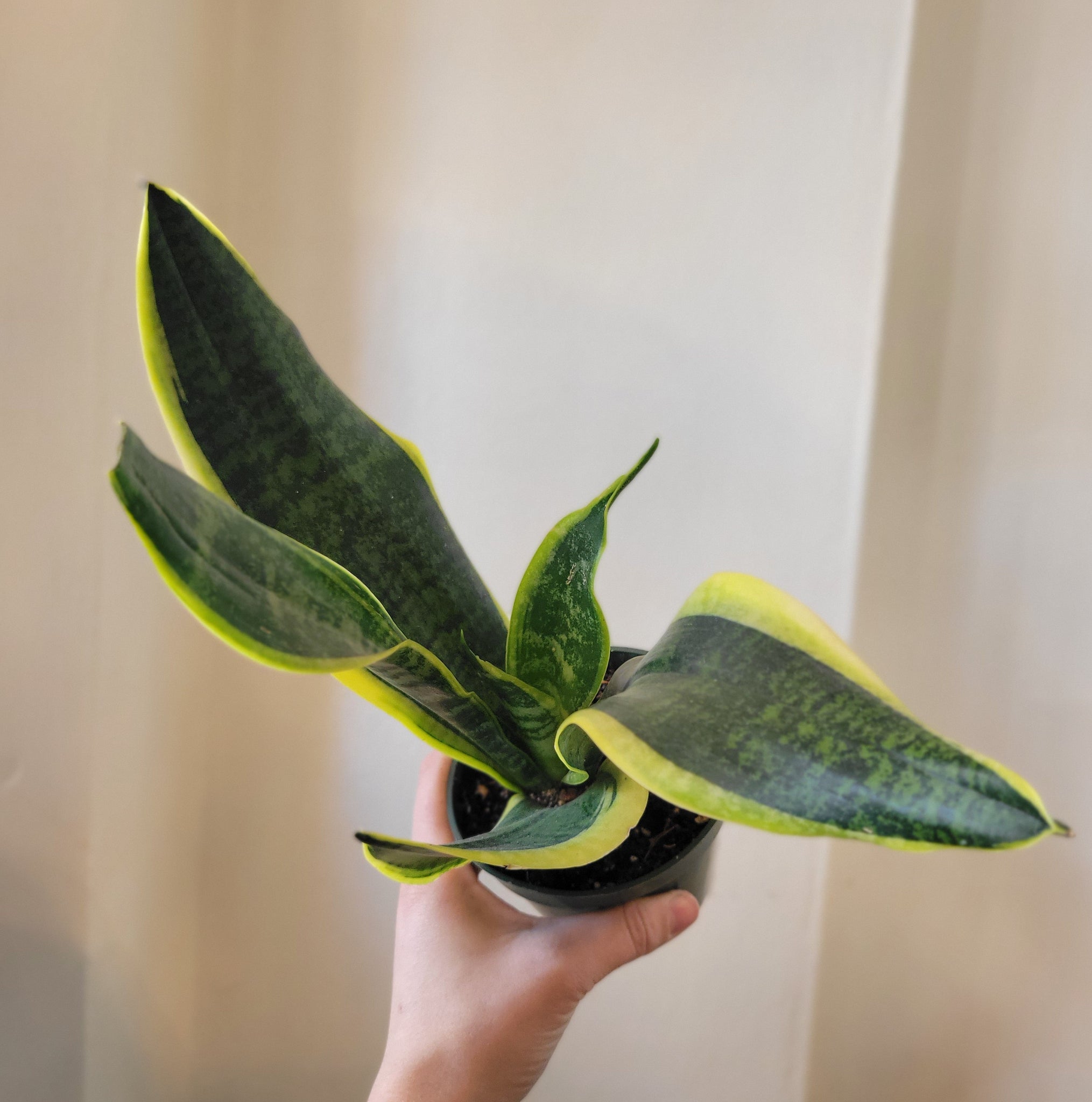3 Simple Techniques For Snake Plant Leaves Turning Yellow
Wiki Article
The Only Guide to Snake Plant Leaves Turning Yellow
Table of ContentsThe smart Trick of Snake Plant Leaves Turning Yellow That Nobody is Talking AboutThe 7-Minute Rule for Snake Plant Leaves Turning YellowSnake Plant Leaves Turning Yellow Fundamentals ExplainedIndicators on Snake Plant Leaves Turning Yellow You Need To KnowIndicators on Snake Plant Leaves Turning Yellow You Need To Know
Right here are 7 factors your serpent plant's fallen leaves could be transforming yellow and just how to fix it. Numerous various plant problems can create yellow leaves, or chlorosis. Chlorosis occurs when plants don't have the trace elements they require to produce chlorophyll, that makes foliage eco-friendly and allows plants to convert sunlight into food.Serpent plants are dry spell forgiving many thanks to their succulent fallen leaves. These plants expand finest in loosened, well-drained soil that's permitted to dry entirely between waterings and may only require water when each month throughout winter months. Overwatering can avoid origins from absorbing dampness and nutrients that the plant needs and can even cause root rot.
A potbound plant can not take in nutrients from the dirt. If your serpent plant is chock-full or outgrowing its pot, this may be the reason of yellow fallen leaves.
See to it the plant has brilliant, indirect light and constantly cozy temperature levels, and water only as soon as the dirt has completely dried out. Watch out for problems and catch them early on to keep your plant looking healthy and balanced and lovely.
The Ultimate Guide To Snake Plant Leaves Turning Yellow
If the fallen leaves on your serpent plant are getting soft, it's typically an indicator of way too much water. Snake plants shop water in their leaves and if they're overwatered, the leaves can end up being soft and mushy. If you think your serpent plant is being overwatered, allow the soil to dry entirely before sprinkling once again.Yes, some yellowing is normal and to be anticipated on older fallen leaves, specifically as serpent plants age. If the plant is or else healthy and the leaves are just lightly yellowed then there is no cause for problem. Nevertheless, if the fallen leaves are dramatically yellowed or if there are other signs of distress then it's ideal to do something about it.
Dead fallen leaves can provide a home for bugs and diseases, which can after that spread to the remainder of the plant. To remove a dead leaf, simply cut it off at the base with a sharp blade or scissors. Make sure to disinfect your reducing device between cuts to stop the spread of condition.
In basic, snake plants should be watered every one to two weeks. If you think your serpent plant has actually been overwatered, the very first action is to quit watering it.
What Does Snake Plant Leaves Turning Yellow Do?
With a little investigation, you need to be able to identify the reason and take actions to deal with the problem and have a healthy and balanced snake plant.The snake plant is a cool houseplant. The snake plant is one of those plants that are wonderful for expanding inside your home in a terrarium, Snake plants can expand rather big, however they likewise have a tendency to be rather low-maintenance.
When the dirt is overwatered, the article source plant cells take in even more water than they can keep. Read right here to Leaves ended up being soaked and yellow as they take in much more water. Sagging serpent plant leaves are triggered by soaked-up fallen leave cells shedding their suppleness. You may see that your snake plant will certainly come to be black or brown if the yellow patches are not fixed by remedying overwatering.
It is, for that reason, more probable that your plant will spot yellow spots on its leaves if you overfeed it with plant food during wintertime. The fallen leaves of snake plants are also prone to yellowing when overfed, especially if the roots are breakable. Repotting your yellowing, watering only when the dirt dries out, and supplying ideal temperature and light problems can conserve it.
Snake Plant Leaves Turning Yellow Things To Know Before You Buy

Your can be gotten rid of by removing the yellow tips. The pruned fallen leaves ought to expand longer if they are watered properly and have optimal light and temperature level problems. It is very important to bear in mind that the sharp tips will certainly not regrow, causing read more them to stick out from the remainder of the leaves.
It won't take wish for the leaves to regrow and grow like the healthy leaves around them. At the same time, you can get rid of damaged leaves from the base of the plant. The shows that it's getting excessive or insufficient light or nutrients. The crucial message is to allow the serpent plant time to recover.

The Only Guide for Snake Plant Leaves Turning Yellow
Several of the most typical reasons are listed below (Snake Plant Leaves Turning Yellow). Sansevierias like completely dry environments and like little water kept at a space of one or two times regular in summer season and regular monthly in wintertime. However when the additional reading water dose obtains out of control, your Sansevieria will certainly experience overwatering. One of the most typical issue provided by overwatering is root rot causing mushy roots and stems with a foul scent.Report this wiki page